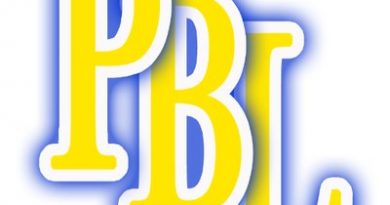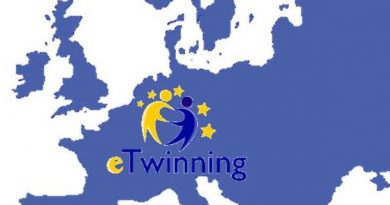Project-Based Learning: Raising Student Achievement for All Learners. (PBL)
Teaching English using Project Based Learning (PBL)
Source: https://www.youtube.com/watch?v=eGWqBZSFgxE
Edutopia: Project-Based Learning: Raising Student Achievement for All Learners.
#projectbasedlearning #englishlearning #instateachers #oposicion #oposito #learnenglish #storytime #knowledge #readingtime #roadtoyourpost #news #goldenopportunity #society #people #noticias #uk #usa #opositandoytrabajando #docente #docentes #oposicionesingles #empowerment #kids #children #education #teacherproblems #opogram
Cooperation means working together to accomplish agreed common goals. Within cooperative tasks, individuals seek aims that are beneficial to themselves and to the group. Cooperative learning implies the instructional use of small groups, so that students work together to maximise their own potential through social interaction and use of technologies, amongst other benefits. The project-based approach or project-based learning (PBL) is a prime example of active methodology in which children collaborate and learn together to come up with educative products.
The active methodologies bring up the role of contextualisation of learning. The strategy is seen as an attempt to facilitate the learners´ comprehension of the language. This inference of meaning is an indispensable strategy that brings about practical learning and plenty of linguistic benefits. It implies that the teacher should assume the role of “creator of learning scenarios” which engage children and create willingness to infer meaning. Libow and Stager (2013) define the term project as kind of work which is substantial, shareable, and personally meaningful. In other words, when a teacher creates a well-designed prompt that capitalises the learners´ curiosity, they can embark on complex, long-term learning adventures.
A highly remarked concept by Libow and Stager is that of “shareability”. With this term they refer to the idea of producing a product that can be shared with other students, the learning community and even a much wider digital learning community. The active involvement of students in creating something “real” in a FL to be shared, presented, personalised and uploaded to a digital platform, shall foster not only real use of the FL, but also a high level of motivation and involvement on the part of the students. This concept coined by Libow and Stager refers to an interesting field in constant development, the digital world. After all, the technological revolution has already created “digital natives”; and a vast amount of possibilities for the contextualisation of learning in engaging and appealing proposals.
Why has project-based learning (PBL) turned into one of the cornerstones of the active methodologies in all official curricula? And immediately, what are the roles that teachers and students are expected to perform in these learning scenarios? In order to shed some light on these issues and prior to the model, along this analysis we must delve into the theoretical foundations of PBL in the times of knowledge and learning technologies (KLT), the appropriate mechanisms to put projects into motion and prime examples of PBL implementation with children in the second cycle (note: let us take this as children in grades three and four, according to the latest legislation).
Candidates can start by highlighting the key words after a couple of readings and a short reflection. They may be: new methodologies, projects (theoretical justification and practical proposals), possible digital learning scenarios, and examples for children in grades 3 or 4. In this regard, we suggest a twofold strategy for the resolution of this PCS, formed by a creative practical sequence of work grounded on updated methodological strategies that justify our actions. Seemingly, theory and practice, whatever the order, seem to be at the heart of a promising initial mind map organization of ideas. Given all this, what may PBL look like in teaching English to Primary education children? To begin at the beginning, let us try to approach the concept.
In broad terms, a project is a short-term kind of planning where the students play a prominent, active role and apply high order thinking skills (HOTS) to solve challenges that result meaningful to them. Surely, irrespective of the definition, research shows psychological evidence of cognitive involvement far beyond the poor “competences benefits” that direct methods would crop in today´s digital society. Krauss and Boss (2013) set a very illustrative connection amongst brain functioning and the implications for PBL teaching practice (adapted).
Competency units
Under the term “competency units”, this FL programming encapsulates ten didactic proposals, whose implementation intends to contribute to the learners´ communicative abilities in English, as well as their KC practical knowledge.
The PBA in the units is based on the idea that students shall gain knowledge and skills by working with English in situations that result meaningful, purposeful and challenging for them; and the questions were immediate: which kind of contextualisation is appropriate for these four grade children? how can I possibly find a purpose for them to engage the FL tasks with a great deal of motivation?
Needless to say that there is not a single answer, since an eclectic communicative view of FLT goes beyond “labelling” our complex task. However, prior to the introduction of the units, there are some notable aspects that deserve special attention:
Most remarkably, the contextualisation in all units revolves around the eTwinning project: “Four hearts, one language”, whose main objectives have already been presented. In this learning community children share the products of their work according to common tasks, through which they shall get to know each other, learn about other children´s countries, traditions and celebrations, similarities and differences amongst cultures, etc. The real social interaction in this communicative approach to FLT is very likely to create a surge of willingness to express themselves and understand other children, since there are powerful reasons to use English: meeting new friends, discovering about where and how they live, the things they like and those preferences we share, playing together in English and exchanging learning experiences.
Moreover, the teaching procedures in the units must respond to coherent patterns, which can be appreciated in all of them:
All units start with a driving question that shall introduce children in the topic creating an interest. This shot for the start creates an initial motivation that shall be maintained with engaging shared tasks, ranging from simple to more complex and demanding.
On the other hand, children are organised in heterogeneous groups for each term. In these “cooperative learning cells” all children keep busy and take on different roles depending on the nature of the tasks. In this working approach, children are informed at the beginning on the unit about the product or outcome they must come up with, and why it is important to get actively involved. After all, if they want to introduce themselves, talk about their daily lives or share funny learning experiences, like recording the karaoke version of a song, it has to be done in English for all partner members to understand.
The eTwinning tasks normally entail complex procedures which need some training, rehearsal and practice. They all share in common a series of linguistic benefits directly related to the FL curriculum for Grade 4, as we shall see next. At the same time, through these integrated tasks children mobilise their intelligences and KC.
The format of the units respects the curricular relations amongst contents, evaluation criteria and LS, in addition to other illustrative unit´s components like didactic objectives, evaluation, resources, transversal elements or cross-curricular links.
With regards to the explanation of sessions, although I consider three basic stages: switching to English, workshop and rounding off, due to obvious reasons of space, this document resumes the learning tasks. The procedure is similar to the logical order with children: presentation of the product children are expected to achieve in the context where the language appears, to continue with a group of representative FL activities leading to that outcome.
The following table provides an insight into the learning products and contexts through which children are involved in using English, and a curricular approximation to illustrate the connection.
| FL competency units. Related Project: “Four hearts, one language” | ||
| Unit | Learning product | Curricular connection |
| 1. Who we are. | Oral presentation in groups. In this unit, children shall practise how to introduce themselves as members of their team. Their presentation is recorded and uploaded to the FL blog and the eTwinning space. Through this product children “meet” their partners from other countries. | Oral presentations to give basic personal information (i.e. name, age, family, likes).
Sociocultural knowledge: formal introductions. Communicative functions: greetings, introductions, preferences. |
| 2. Shall we talk? | Skype conversation. Once they know a little about their new friends, it is time to greet and maintain brief conversations in groups according to previously rehearsed scrips and patterns. | Oral conversation. Simple questions and answers to know about the other children (i.e. do you like…? who is your favourite…?) Affirmative, negative and interrogative sentences in simple present. Expressing opinions.
Hobbies, personal interests. Frequency adverbs. |
| 3. More about us. | Writing an email (group writing). Description of daily routines, school-life, spare-time activities. Through this task children learn how to write an informal email to give information. | Descriptive syntactic patterns. Writing about routines, the school, favourite subjects.
Reporting back the email received by the eTwinning partners. Simple present all persons. Time adverbs. |
| 4. Got Talent! | Christmas carols contest. In this unit students have the chance to change the lyrics of a carol for Christmas greetings. In groups they record their versions and listen to the ones by their partners. | Christmas time, traditions and celebrations. Construction of sentences following simple patterns. Sociocultural aspects related to Christmas. The Anglo-Saxon tradition. |
| 5. MasterChef. | Recording studio. Children explain typical recipes in the region. The task is carried out with the help of parents who act as cooks whilst children describe the cooking steps and nutritional benefits. | Food, healthy habits, recipes, ingredients, cooking verbs, ordering a sequence (i.e. first, next…), lexis related to properties of food, nutritional categories. |
| 6. Would you visit us? | Marketing campaign. PowerPoint presentation with audio. | Places and locations in our town. Present and past to be, to have (i.e. it was/they were). Simple oral narrations. Space adverbs. Buildings and places |
| 7. English cultural week. | English gymkhana. The Highland Games. Before playing the games, students must understand the rules and explain them to their classmates | Healthy lifestyle, sports, description of procedures to play a game. Making questions to ask for clarification (i.e. can I…?), setting games norms and rules in English (modal verbs, prepositions). Sports equipment, establishing rankings (ordinal numbers). |
| 8. Puppets show. | Storytelling. Using puppets elaborated by the parents´ FL workshop, children perform a story about positive coexistence at school.
Inspiration story: How Full is your Bucket? By Rath and Reckmeyer. The final performance is recorded and uploaded to the FL blog and eTwinning space. |
Storytelling: “How Full is your Bucket? Lexis related to emotions and feelings. Comprehension of simple narrations.
Writing slogans to fill other people´s buckets with good feelings. Modals: should, shouldn´t. Verbs related to offering and asking for help, establishing initial communication, answering. |
| 9. Planning the future. | Skype conversation. Questions and answers about future plans. Children keep a conversation in groups monitored by the teacher. They make and answer questions with their eTwinning partners and about current summer activities description. | Time expressions. The future, “going to”. Summer activities. Vacation plans. Questions and answers (i.e. what are you going to do during the summer? I´m going to…), expressions of favourites. Locations, places, landscapes (i.e. the beach, the mountains, the city…), preferences. |
| 10. The project highlights! | Writing an email. It is time to say goodbye to our eTwinning partners. Children send an email with text and photos of common tasks carried out and shared along the year.
|
Writing an informal email to say goodbye. Describing actions in the past (i.e. we went to the theatre…), expressing good wishes, courtesy conventions. |
- Libow, S and Stager, G “Invent to learn: making, tinkering and engineering in the classroom”. Torrance, CA: Constructing Modern Knowledge Press, 2013.
More information about us:
facebook.com/OposicionesInglesRP/
Twitter: @OposIngles
https://twitter.com/OposIngles
Instagram: https://www.instagram.com/oposiciones_ingles
Video by Teachings in Education




